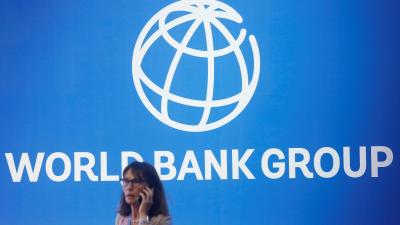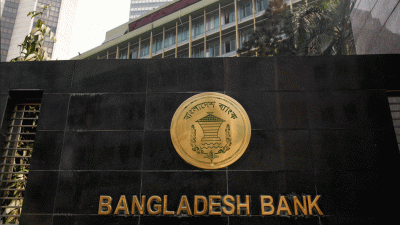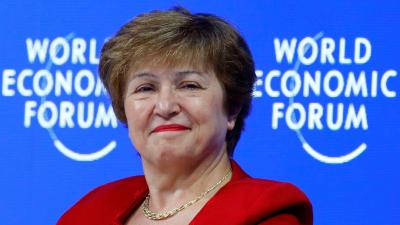 Prospects for the proposed Special Economic Zone (SEZ) at Sabroom, Tripura, brightened considerably following a recent NDA Government notification on the project. The centre and other agencies will invest Rs 15.5 billion to help set up units to produce agro-based products, food processed items, various rubber goods, textiles, bamboo handicrafts and furniture etc, in Tripura.
Prospects for the proposed Special Economic Zone (SEZ) at Sabroom, Tripura, brightened considerably following a recent NDA Government notification on the project. The centre and other agencies will invest Rs 15.5 billion to help set up units to produce agro-based products, food processed items, various rubber goods, textiles, bamboo handicrafts and furniture etc, in Tripura.
The Tripura Industrial Development Corporation (TIDC) will be associated with building suitable infrastructure for the project to ensure effective power supply, a transport network, road and railway connectivity, round the clock water supply, land and other accessories. Initial estimates suggest that at least 12,000 people will be employed in the first phase.
Tripura Government sources are counting on investors from Bangladesh to invest in some projects making use of the facilities that are on offer. Local authorities are laying great stress on using the services of the Chattogram port, not far from Sabroom, for the movement of export items. For investors, there will be no tax on export items for the first five years. During the next five years, there would be very low taxation. There could be joint ventures as well.
Agartala-based media report that local authorities will follow as far as possible the development model put into practice at Sananda in Gujarat, for the SEZ. Here, the Tatas had shifted their Nano small car-producing unit, a project that was sabotaged by the Trinamool Congress at Singur, West Bengal when it was ready for production.
Over the years, the Nano project ran into difficulties. But the Tatas switched to producing other models, without much trouble. Further, following their example, a number of other automakers set up their units/facilities, generating thousands of new jobs and improving the economic landscape.
The fact that close trade, cultural as well as other bilateral ties already exist between Bangladesh and Tripura is an added advantage. The small northeastern state had played host to thousands of Bangladeshis fleeing from a Pakistani genocide during the war for freedom in 1970-71. Bangladeshi Prime minister Sheikh Hasina has recalled with gratitude Tripura’s help at the time. Making a special gesture recently, she generously agreed to increase the supply of water to Tripura from the river Feni through a special agreement.
Bangladesh also chose Agartala in Tripura as a location in India to set up the Third International Internet highway in South Asia, with a 10 GB bandwidth, after Chennai and Mumbai. The bandwidth capacity can be increased to 40 GB if needed. The objective was to ensure instant, reliable, secure communication at the bilateral level.
During a joint ceremony attended by Hasina and Indian Prime Minister Narendra Modi, the latter had said in 2016, that the occasion was’ historic’ After ensuring close connectivity by rail, road, water and air, the two countries were now linked in space as well.
Meanwhile, almost unnoticed by print and electronic media, Tripura recently added another feather to its cap by beginning the export 20 megawatts of power daily to Nepal, at Rs 4,34 a unit. It sends 160 MWs daily to Bangladesh, which has a high demand for power. Tripura’s supply to Nepal began nearly four months ago.
Currently, the state has launched a major project to increase its power generation capacity from gas turbines at Rokhiya. This is a project that would cost Rs 19.25 billion of which 80% would come from the Asian Development Bank as a loan. Daily generation is expected to rise from about 63 to 120 megawatts daily. After the commissioning of the Palatana power project some time ago, the present generation capacity in Tripura has gone up to around 752 MWs daily.
In addition, Tripura Government sources say, special attention is being paid to develop the existing tea, rubber and tourism sectors, with help and co-operation from the BJP-led NDA II Government. At its present rate of progress, Tripura could soon challenge the position occupied by Sikkim as the number one state among the eight NE’s sisters’. Its proximity to and close economic ties with Bangladesh and infra advantages over Sikkim give it a special edge, say experts.
 Business
Business
41380 hour(s) 50 minute(s) ago ;
Evening 11:44 ; Sunday ; Jul 06, 2025
Regional economic growth : Bangladesh-Tripura ties
Send
Ashis Biswas, Kolkata
Published : 02:00, Dec 20, 2019 | Updated : 02:00, Dec 20, 2019
Published : 02:00, Dec 20, 2019 | Updated : 02:00, Dec 20, 2019
0 ...0 ...
/hb/
Topics: Top StoriesExclusive
- KOICA donates medical supplies to BSMMU
- 5 more flights to take back British nationals to London
- Covid19: Rajarbagh, Mohammadpur worst affected
- Momen joins UN solidarity song over COVID-19 combat
- Covid-19: OIC to hold special meeting
- WFP begins food distribution in Cox’s Bazar
- WFP begins food distribution in Cox’s Bazar
- 290 return home to Australia
- Third charter flight for US citizens to return home
- Dhaka proposes to postpone D8 Summit
Unauthorized use of news, image, information, etc published by Bangla Tribune is punishable by copyright law. Appropriate legal steps will be taken by the management against any person or body that infringes those laws.
Bangla Tribune is one of the most revered online newspapers in Bangladesh, due to its reputation of neutral coverage and incisive analysis.
F R Tower, 8/C Panthapath, Shukrabad, Dhaka-1207 | Phone: 58151324; 58151326, Fax: 58151329 | Mob: 01730794527, 01730794528






